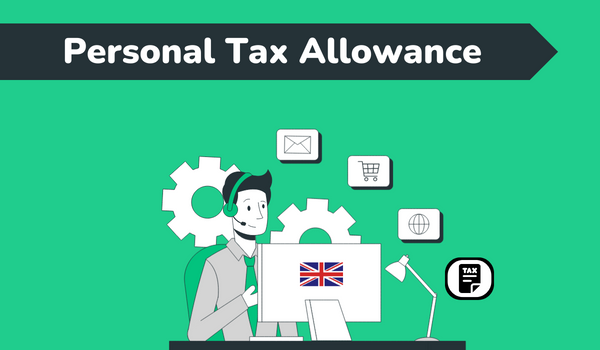Get all essential information about the Personal Tax Allowance: What is Personal Tax Allowance and How Much Is It? Here. Generally, the employer is responsible for withholding the income tax from the worker’s salary and forwarding it to the HMRC on behalf of the worker. Personal Tax Allowance is available to individuals who fall in the lowest tax bracket.
Contents
Personal Tax Allowance
The Government imposes Personal Income tax on the individuals’ income and earnings. It is the best source for the government to generate revenue and to assist the public by providing financial assistance through the amount gathered as a part of allowance or benefits. Personal Income Tax is generally calculated by subtracting the deduction and the exemption from the lump sum income. In simple words personal tax allowance is the amount on which income tax is not imposed.
Recently, in the UK, the Personal Tax Allowance is capped at £12,570. Any employee earning more than the limit set by the authorities is liable for the Income Tax. If you are earning less than the £12,570 in a year, you do not have to file income tax. If you are a working person, you have to pay the tax while you earn under the PAYE scheme. Probably certain amount will be subtracted from the first few payslips by the employer. However, this amount will be credited back as you claim for the rebate.
Important links
What is Personal Tax Allowance?
Personal Allowance makes the tax structure more progressive by ensuring that the low-income holder is exempt from the tax. For instance, if you are earning between £12,571 to £50,270, then each worker making more than £12,571 will be paying 20 percent of tax. If you want to know the precise calculation, simply fill out the details on the official website calculator, and it will let you know what tax rate you have to pay.

Even if you are liable for the tax or not, you have to inform the HMRC regarding all the income sources, and the officials may be penalized for not submitting the income details to the Revenue. Individuals do not have to pay the tax up to the tax-free allowance until they meet the top band, where they have to pay the top rate of 45 per cent. It is important to note that National Insurance has a separate deduction rate.
Personal Tax Allowance Overview
| Article Title | Personal Tax Allowance |
| Administered by | UK Government |
| Handled By | HMRC |
| Purpose | To reduce taxable income |
| Tax Allowance Amount | £12,570 per year |
| Maximum Cap | 125,140 |
| Certified Portal | gov.uk |
How Much Is It?
To reduce the taxable income, taxpayers are eligible to claim deductions and exemptions. Any individuals making payments into the UK pension scheme do not have to pay the tax on the contribution amount. Hence, this is a huge relief for the earners who are exempted from the tax bracket. For a better understanding of the bands and income tax rate, we have shared the data in a tabular form.
| Tax band | Income threshold 2024 | Income tax rate |
| Personal allowance | 0 to 12,570 | 0% |
| Starting rate for savings | 12,571 to 17,570 | 0%* |
| Basic rate | 12,571 to 50,270 | 20% |
| Higher rate | 50,271 to 125,140 | 40% |
| Additional rate | Over 125,140 | 45% |
Before making a claim, ensure that you meet the eligibility norms for the Tax-Free Allowance. Candidate must be a citizen of the UK or have worked in the country during the taxation year; you are entitled to get the personal Tax Allowance.
How To Claim Personal Tax Allowance?
To make a claim, candidates have to navigate to the official website of Government UK. There, they have to complete the major 5 sections. Before making a claim, make sure that you have all the essential documents, which include the payslip, proof of identity, bank details and so on.
Grab the form from the official HMRC portal and start filling out all the sections.
- Section 1: Submit all the crucial data and select the taxation year you want to make a claim for.
- Section 2: Provide all details for the income source in the UK.
- Section 3: Ensure all about the relief and the deduction on the taxes for the resident abroad security.
- Section 4: You are all set to claim your tax allowance.
- Section 5: You will receive the refund shortly.
If you are a non-native, you must collect and submit the R43 Form and state the income for the whole fiscal year. This typically includes income received from 6 April 2023 to 5 April 2024.